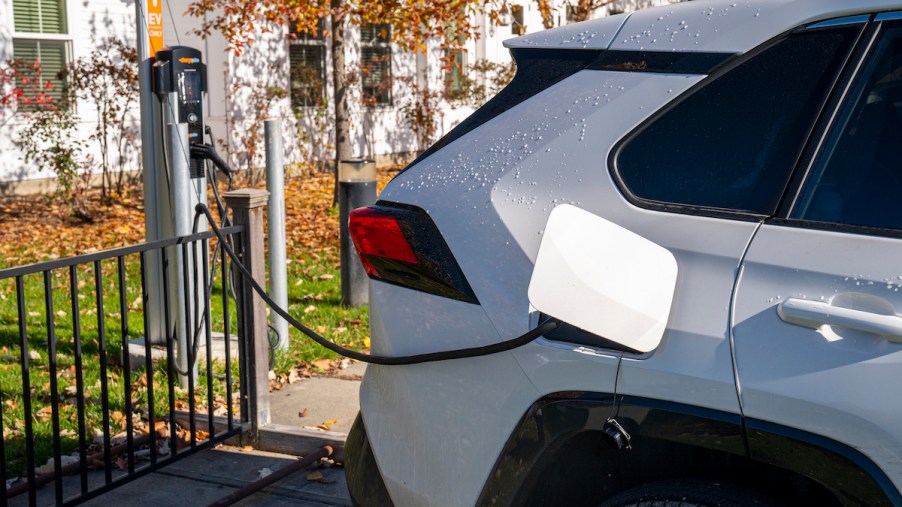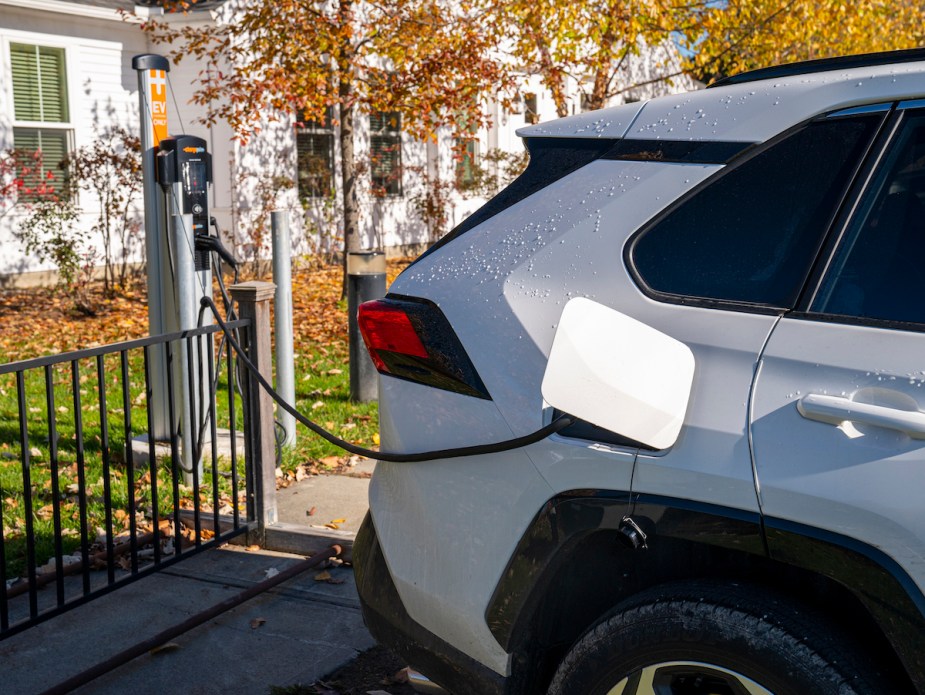
Only 1 Plug-in Hybrid (PHEV) Has an Electric Driving Range Over 60 Miles
Automakers keep evolving their technology to keep up with customers’ expectations. One such example are plug-in hybrid electric vehicles (PHEVs). It is deemed by automakers and car enthusiasts to be superior to its hybrid counterpart and a step below an EV. With a larger electric battery and a different recharging system, the PHEVs have a higher electric driving range than the hybrids.
New and advanced technology has seen some PHEVs performing better than others, with only one model offering an electric driving range of over 60 miles. So, what are the details surrounding this PHEV, and what could be an alternative that gets close to the 60 miles?
So, how do plug-in hybrid vehicles (PHEV) work?

A plug-in hybrid is an electric vehicle that uses a combination of an electric motor and an Internal Combustion Engine (ICE) powered by gasoline. It can run on electric power and automatically switch to gasoline when the battery is depleted. In simple terms, PHEVs can use battery power, gas, or a combination of the two to run, thus ranking high in fuel economy.
It also charges differently than what a typical hybrid does. Standard hybrids automatically regenerate battery power, while PHEVs have the capability of plugging in to charge their batteries faster, similar to an EV.
The 60-mile PHEV: Karma GS-6/ Revero GT
According to Car and Driver, Karma GS-6 boasts a PHEV with an electric driving range of up to 61 miles running solely on a battery. It’s a safe and capable model with many standard features, not forgetting its stylish appearance. An abundance of safety features comes standard on this vehicle, including stability control, a pre-collision safety system, 4-wheel ABS, and tire pressure monitoring. Its base 1.5-liter three-cylinder generates 536 hp and 650 lb-ft of torque, giving you a classic touring experience.
The Karma GS-6 has height-adjustable passenger and driver seats that are leathered and ventilated for better driver and passenger comfort. Revero GT, which also has a plug-in hybrid powertrain, offers more performance than the GS-6. The all-wheel drive Revero GT has more than 1100 hp and safety features similar to Karma GS-6. Convenience is also on the automaker’s mind with keyless ignition, electric power steering, cruise control, and a rearview camera.
Toyota RAV4 Prime with over 40 miles of electric driving range
After Toyota jumped on the electrification bandwagon, the Toyota RAV4 Prime is a runner-up in the PHEVS market here in the US. Edmunds points out that its base 2.5-liter four-cylinder generates 302 hp and 165 lb-ft of torque. With an excellent all-electric driving range of more than 40 miles, it has become a great choice for most consumers. It has a charming design, decent cargo capacity, and interior dimensions, making it comfortable for many consumers.
A strong emphasis has been laid on safety with features such as blind spot and lane departure warnings and an accident-avoidance system. Others are stability control, traction control, child seat anchors, and collision safety systems. It is worth mentioning that Toyota has included keyless ignition, electric power steering, adaptive cruise control, and rear mirrors for convenience.
The fact is that moving from the traditional gas-powered engine to electric cars is unavoidable. Automakers and consumers must have this in mind. The result is a variety of hybrid and plug-in hybrid vehicles with excellent electric range performance and designs. Having a car running on fuel and electricity is amazing and convenient. The availability of Karma GS-6 with an electric range of more than 60 miles is even impressive, giving drivers confidence and experience.


